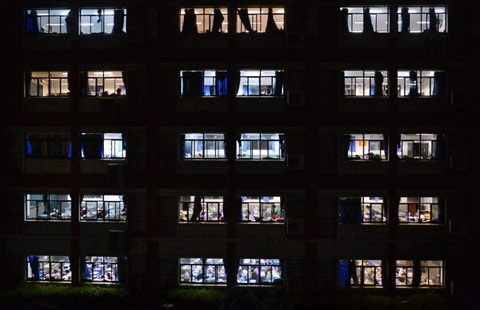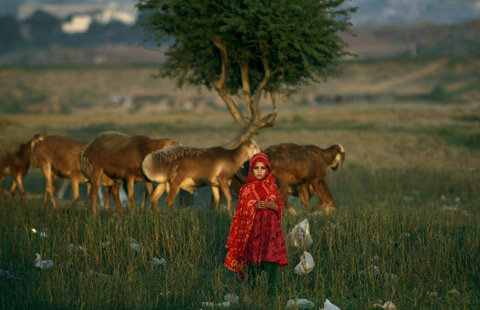Efforts made to preserve ancient canal
Updated: 2014-06-23 06:57
By Wang Kaihao (China Daily)
|
||||||||
When the Grand Canal, the world's longest artificial waterway, was inscribed on the World Heritage list at UNESCO's 38th session of the World Heritage Committee on Sunday in Doha, Qatar, excitement was stirred among the Chinese delegation.
The earliest construction of the canal can be traced to the 6th century BC, and the canal was first connected as a whole in the 7th century AD. The length of the canal and its tributaries is about 3,000 kilometers. Of that total, 1,011 km of the canal - a part that passes through 35 cities and includes 58 historical sites - has been designated for the World Heritage list.
According to Jiang Shili, deputy head of the application office for World Heritage, the southern part of this important communication channel connecting northern and southern China in ancient times still functions well today and is considered a special heritage because it is "alive".
"It is not only an artificial river," he said. "It is a witness to the country's cultural communication and mixing of different ethnic groups."
Jiang added that more than 15 percent of China's population lives in areas along the canal, which was originally built for transportation and still accounts for shipping that amounts to 25 percent of the country's GDP.
Yin Zhanqun, deputy head of the Suzhou municipal cultural relics bureau in Jiangsu province, said such success is cause for more thought by city planners.
"Suzhou is formed due to the waterway, and constructions by the canal compose our skyline," he said. "As the city per se is a big cultural relic on the canal, we need to consider more how to better use the river without harming its original landscape."
Tong Mingkang, deputy director of the State Administration of Cultural Heritage, admitted that preparation was difficult. Due to a lack of precedent for processing such a complicated project, coordination was required among eight provinces and municipalities as well as 13 departments under the State Council.
"There is still much room for improvement. We need more rigid implementation of clearer rules protecting the heritage within so large an area, " Tong said.
According to statistics of his administration, the total heritage zone of the Grand Canal is 20,819 hectares and the buffer zone is 54,263 hectares. He said much work has been done based on suggestions from UNESCO experts.
"The water is cleaner. The landscape is more beautiful. The people along the canal have a better choice of development," Tong said during a speech in Doha.
"The inscription marked the beginning of order," Tong said. "We will continue to enhance the management so that this waterway will embrace a brighter future for sustainable development."
- Long history of China's financial capital
- Shanghai increasingly favored by sci-fi filmmakers
- Maverick director steals the show
- China announces stimulus package for film industry
- Children attend First Writing ceremony at Confucius Temple
- Culture insider: 7 things you might not know about Summer Solstice

 Council of Fashion Designers of America Awards
Council of Fashion Designers of America Awards
 Fan Bingbing, first Chinese actress in Barbie Hall of Fame
Fan Bingbing, first Chinese actress in Barbie Hall of Fame
 Awarding ceremony of 2014 hito Pop Music held in Taipei
Awarding ceremony of 2014 hito Pop Music held in Taipei
 Zhao Liying's photo shoot for Children's Day
Zhao Liying's photo shoot for Children's Day
 'Taken 2' grabs movie box office crown
'Taken 2' grabs movie box office crown
 Rihanna's 'Diamonds' tops UK pop chart
Rihanna's 'Diamonds' tops UK pop chart
 Fans get look at vintage Rolling Stones
Fans get look at vintage Rolling Stones
 Celebrities attend Power of Women event
Celebrities attend Power of Women event
Most Viewed
Editor's Picks

|

|

|

|

|

|
Today's Top News
Neighboring countries urged not to stir tensions
Criticism by ex-US official dismissed
Roughshod over China's rights
Chinese tourists advised to play it safe
US mulls airstrikes in Iraq, but no clear path forward
PLA official rips Tokyo's 'historical distortions'
Developer demands edits to new Transformers film
Iran opposes US intervention in Iraq
US Weekly

|

|








